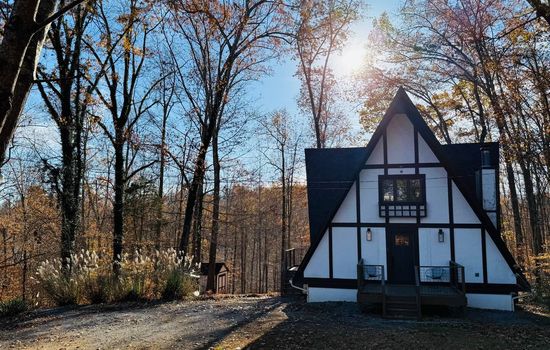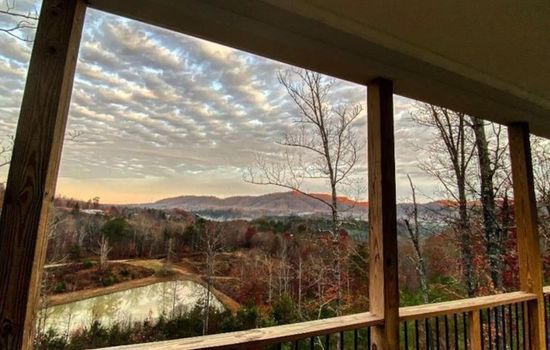The visitor center hours at Mill Springs Battlefield National Monument are not specified in the provided sources, but you can check the official website or call 606-636-4045 for the most up-to-date information.
There is no entrance fee to visit Mill Springs Battlefield National Monument. It is free year-round.
From Somerset, take US-27 South for 7 miles, then exit onto KY-80 East, immersing yourself in historic landscapes and Civil War legacy.
Parking is available near the Visitor Center and at Zollicoffer Park. Spaces accommodate cars, smaller RVs, and motorcycles. No overnight parking; no fees mentioned.
Accessibility & permits
Emergency
- Cell service availability:Partial
Information not accurate?
Help us improve by making a suggestion.
In the rolling hills of Kentucky, where the gentle slopes of Pulaski and Wayne counties meet, lies the Mill Springs Battlefield National Monument, a site steeped in history and natural beauty. This 1,459-acre monument is the backdrop for one of the American Civil War’s earliest and most significant battles, the Battle of Mill Springs, which took place on January 19, 1862.
As you step into this historic landscape, the whispers of the past are palpable. The Visitor Center and Museum in Nancy, formerly Logan’s Crossroads, serves as an excellent starting point, offering a 10,000-square-foot space filled with artifacts and interpretive signs that guide you through the battle’s unfolding. The surrounding terrain is dotted with walking trails that weave through forests and open fields, each step revealing the strategic positions and pivotal moments of the conflict.
The Mill Springs National Cemetery, adjacent to the visitor center, is a solemn reminder of the sacrifices made, with 408 of the 722 graves belonging to unknown soldiers. The American Battlefield Trust has preserved over 769 acres of this battleground, ensuring its integrity for future generations.
Seasonal changes paint the landscape with vibrant hues; spring brings blooming wildflowers, summer warms the air with the songs of cicadas, autumn sets the trees ablaze with golden and crimson leaves, and winter blankets the ground in a serene silence. Though the battlefield itself is not centered around a lake, the nearby Lake Cumberland offers a tranquil escape with its crystal waters and diverse fish population, including bass and catfish.
Special events bring the monument to life: candlelight tours that illuminate the battle lines, living history presentations that reenact the lives of soldiers, and occasional reenactments that echo the sounds of war. Local outfitters and artisans in nearby Somerset provide a rich cultural tapestry, with shops filled with handmade crafts and historical artifacts.
For those seeking a deeper connection, ranger-led tours and commemorative ceremonies offer a poignant immersion into the site’s history. As the sun sets over Mill Springs Battlefield National Monument, the shadows cast by the setting sun evoke a powerful sense of place, a reminder of the sacrifices and triumphs that shape our collective heritage. This is a destination where history, nature, and community intertwine, inviting travelers to experience a piece of America’s rich past in a setting of unparalleled beauty.
- Area (mi²)
- 2.3
- Established year
- 2020
Top 3 Facts about Mill Springs Battlefield National Monument
During the Battle of Mill Springs, the cold and wet weather in southern Kentucky, where temperatures are usually at their lowest in January, caused significant problems with the firearms of Confederate troops, with poor visibility and enemy recognition issues due to the harsh winter conditions.
Amidst the historic landscape, a diverse array of flora and fauna thrives. The grounds are home to the revered “Zollie Tree,” a white oak descended from the original where Confederate General Felix K. Zollicoffer’s body was laid. The area supports a variety of wildlife, including white-tailed deer, turkey, and numerous bird species. The nearby lakes and creeks are inhabited by bass, catfish, and other aquatic life, adding to the natural beauty of this significant site. The blend of historical significance and vibrant ecosystem makes for a unique and enriching visit.
The area is defined by the Cumberland River, whose waters carve through cliffs and ravines, creating a natural defensive barrier. The river’s southern shore, where the Mill Springs fortified ferry landing is located, features the 13 springs that feed into a historic water-powered mill, set amidst a scenic recreational area. The surrounding landscape is marked by modest hills and the brown-hued waters of Lake Cumberland, a backdrop to the rich historical significance of the site.
Family programs
- Junior Ranger
- Ranger-led Tours
- Self-guided Tours
- Workshops & Hands-on Activities
- Living History & Cultural Demos.
Travel Tips
Plan Ahead
Plan a few days in spring to explore the battlefield, starting at the visitor center for the driving tour map. Anticipate walking on varied terrain and rest often. Check for reenactment events like the annual Battle of Mill Springs. Pack meals as options are limited. Park near the visitor center for easy access.
Pack Appropriately
Pack layers for varying weather, sturdy hiking boots, and a waterproof tent if camping. Bring headlamps, extra batteries, and a multi-tool. Don’t forget water, non-perishable snacks, and a first-aid kit. Check the season for specific gear like warm jackets or insect repellent.
Respect Wildlife
Keep a safe distance from wildlife, avoid feeding them, and pack out all trash. Stay on designated trails to protect sensitive habitats, especially during breeding and nesting seasons. Respect the natural balance and leave the area as you found it.
Stay Informed
Check weather forecasts and trail conditions before heading out. Wear appropriate clothing and stay on marked trails to avoid slippery areas and ledges. Carry a first aid kit and know emergency contact numbers like 911 for urgent situations. Stay informed about fire restrictions and park rules.
Seasons
In spring, mild temperatures (60s-70s°F) and blooming landscapes set the stage for a historic visit. Attend the annual Conflict at the Crossroads event in November, but for spring, enjoy serene battlefield walks and living history programs, making it an ideal time to immerse in Civil War history.
Visit in summer for warm temperatures (80s-90s°F) and humid weather. Experience Musket and Artillery Demonstrations in July, a rare glimpse into Civil War warfare amidst lush green landscapes. Ideal for history enthusiasts and outdoor enthusiasts alike.【Summer events bring history to life.】
Visit in fall, with mild temperatures (50s-70s°F) and crisp weather, ideal for exploring historic battlefields. Experience the Conflict at the Crossroads event in November, featuring musket and artillery demonstrations, immersing you in Civil War history.
Visit in winter (Dec-Feb) for a serene, icy landscape with temperatures ranging from 25°F to 45°F. Crisp air and fewer crowds enhance the historical ambiance, though some trails may be slippery. A perfect time for a contemplative, immersive experience.
Information not accurate?
Help us improve by making a suggestion.
Where to stay
Frequently Asked Questions
Ready to dive into what Mill Springs Battlefield National Monument has to offer? Let’s tackle some of the burning questions you might have as you plan your visit!
-
The closest city to the Mill Springs Battlefield is Nancy, Kentucky, which was formerly known as Logan’s Crossroads. This site is located in Pulaski County, where the battle took place on January 19, 1862.
-
Dogs must be on a leash no longer than 6 feet at all times. Retractable leashes that extend beyond 6 feet are not allowed. This rule helps ensure safety and respect for other visitors and wildlife.
-
Yes, parking is free. This includes parking for all types of vehicles, such as campers, trailers, motorhomes, and camper vans.
-
Yes, guided tours are available. Starting June 14, 2025, park rangers will conduct tours of the Brown-Lanier House every other Saturday. Additionally, a self-guided driving tour and walking trails with interpretative signs are available at the visitor center.




